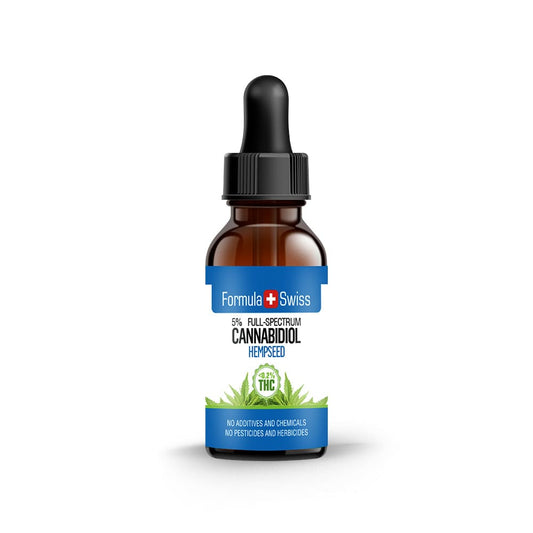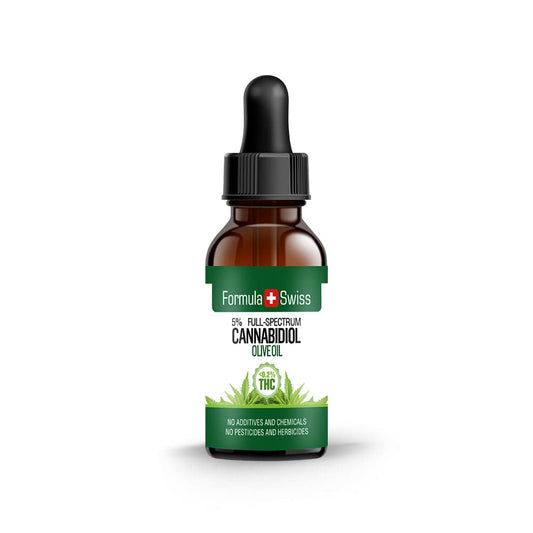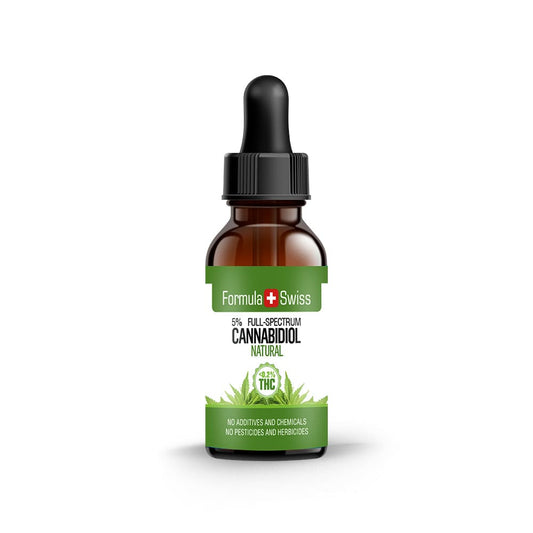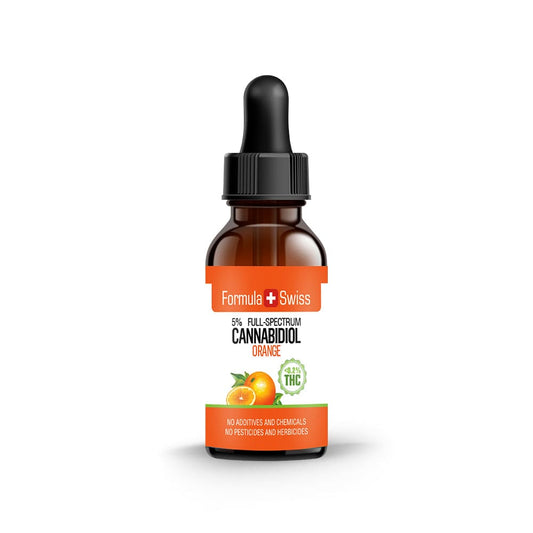Among the many compounds in Cannabis sativa L., one that has been drawing more attention in recent years is cannabichromene, or CBC. First discovered in 1966, it has gradually gained recognition as both researchers and industry professionals take a closer look.
Unlike THC, CBC is not associated with psychoactive effects, which makes it especially interesting in scientific studies.
With more than a decade of experience in cannabis cultivation, extraction, and research, I’ve noticed a clear movement toward studying the lesser-known cannabinoids within hemp. CBC is one of the compounds now beginning to hold its own place in those discussions.
Exploring CBC involves examining how it interacts with specific receptors in the body. This helps place it within the larger cannabinoid framework, offering deeper insight into the natural complexity of the plant.
Prefer watching over reading? This video covers the key points from the article:
Save up to 30% when you order your CBD oil today
Key Takeaways
- Cannabichromene (CBC) is a non-psychoactive cannabinoid identified in 1966.
- CBC forms through the enzymatic conversion of cannabigerolic acid (CBGA) into cannabichromenic acid (CBCA), which later decarboxylates into CBC.
- Unlike THC, CBC does not strongly bind to CB1 receptors in the brain.
- CBC interacts with other receptors in the body, contributing to its distinct biochemical profile.
- CBC is typically present in lower concentrations in hemp and cannabis plants compared to CBD and THC.
This article is provided for informational purposes only and does not relate to any of the products available in our webshop. For more information, please see our full disclaimer.
Introduction to CBC (Cannabichromene)
Cannabichromene (CBC) is a non-psychoactive cannabinoid found in Cannabis sativa. Unlike THC and CBD, it interacts with the body’s receptor systems in distinct ways, which has drawn scientific interest for further study.
To understand CBC, researchers focus on its chemical structure, how it develops in the plant, and how it connects with receptors such as TRP and CB2. These receptors are involved in various natural processes, offering a foundation for understanding CBC’s unique role in cannabinoid science.
CBC originates from CBGA, the precursor molecule that also gives rise to several other cannabinoids. This early role in synthesis highlights its relevance when studying plant-based compounds.
It was first isolated in 1966 by two research groups—Gaoni and Mechoulam, and Claussen et al. Their findings marked the discovery of CBC as a natural cannabinoid in Cannabis sativa.
Although CBC is less abundant than THC or CBD, its distinct behavior at the molecular level continues to make it a subject of growing interest. Ongoing studies aim to clarify its role and characteristics.
Understanding CBC’s composition and concentration is important for accurate formulation and analysis in both research and development settings.
| Feature | CBC | THC | CBD |
|---|---|---|---|
| Psychoactivity | Non-psychoactive | Psychoactive | Non-psychoactive |
| Receptor Interaction | TRP, CB2 | CB1, CB2 | TRP, CB2 |
Chemical Structure of CBC
CBC shares a biosynthetic pathway with other cannabinoids through CBGA. When CBGA is converted into CBCA via enzymatic processes, and CBCA is later exposed to heat or light, it undergoes decarboxylation to form CBC. Its chemical formula is C₂₁H₃₀O₂, and while its structure resembles that of THC and CBD, small differences influence its receptor activity.

CBC’s structure includes a three-ring core and a hydrocarbon tail, features that support its solubility in lipids and its function in formulations studied alongside other cannabinoids and terpenes.
Unlike THC, CBC does not bind strongly with CB1 receptors, which explains why it does not produce intoxicating effects. Scientists are continuing to investigate how its molecular shape contributes to its activity in cannabinoid-focused studies.
Order and enjoy up to 30% off your CBD oil purchase
The Complex Biochemistry Behind CBC
The journey of Cannabichromene (CBC) from biosynthesis to receptor interaction reveals a detailed biochemical pathway. This provides insight into its characteristics both in plant biology and in laboratory research.
As reviewed in the journal Molecules, CBC originates from Cannabigerolic acid (CBGA). Through the enzyme CBCA synthase, CBGA is converted into Cannabichromenic acid (CBCA).
CBCA then undergoes decarboxylation, usually triggered by heat or light, to form CBC in its active neutral state for analysis.

A review published in the Journal of Pharmacology and Experimental Therapeutics highlights that CBC shows little binding to CB1 receptors, moderate activity at CB2 receptors, and does not act as an intoxicating compound.
Instead of directly activating CB1 or CB2 receptors, CBC may influence the endocannabinoid system indirectly. It has been observed to inhibit the breakdown of 2-AG while showing limited effect on anandamide (AEA) degradation.
The Endocannabinoid System (ECS)
| Stage | Chemical Process | Resulting Compound |
|---|---|---|
| Synthesis | CBGA production | CBGA |
| Enzymatic Transformation | Conversion to CBCA | CBCA |
| Activation | Decarboxylation | CBC |
| Interaction | Modulation of 2-AG degradation | Indirect ECS influence |
CBC also interacts with transient receptor potential (TRP) channels, which help detect physical and chemical stimuli. These receptor interactions contribute to CBC’s broader scientific profile.
By mapping out CBC’s effects across receptor systems, researchers aim to build a clearer picture of its role within cannabinoid science.
The Interest in Cannabichromene (CBC)
CBC continues to attract attention, especially in the study of non-psychoactive cannabinoids. Its unique receptor interactions make it an important area of ongoing research.
Current work includes examining its effects in sensory-related systems under controlled laboratory settings, helping generate reference points for further studies.

Research is also exploring how CBC relates to behavioral models, although this is still at an early stage and requires careful review. Laboratory studies on specific cell lines are helping expand understanding of how cannabinoids work in biological systems.
As knowledge grows, CBC is becoming an increasingly relevant subject in cannabinoid research, particularly within the category of non-psychoactive compounds.
Order CBD oil now and save as much as 30%
A Closer Look at CBC Research and Studies
Recent investigations have compared CBC to other cannabinoids such as CBD, highlighting differences in how they interact with receptor systems beyond CB1 and CB2.
A study published in BMC Genomics used human iPSC-derived hepatocyte models to examine dose-dependent gene expression changes linked to CBC. Methods included RNA sequencing (RNA-seq) and gene set enrichment analysis (GSEA) to explore CBC’s activity across multiple biological pathways.
Comparison with CBD helped clarify CBC’s specific mechanisms, including its possible role in influencing anandamide levels. These findings contribute to the understanding of how cannabinoids may act independently or together.
Research in the Journal of Pharmacology and Experimental Therapeutics supports CBC’s limited CB1 affinity, moderate CB2 activity, and its distinct non-psychoactive profile.

Rather than directly activating major receptors, CBC may influence the endocannabinoid system indirectly and shape the activity of other cannabinoids. Ongoing work is needed to map its full profile.
Exploring the Future of CBC
CBC is steadily gaining attention in cannabinoid research. Unlike THC, it does not produce intoxicating effects, which makes it a useful subject for studying non-psychoactive cannabinoid activity.
Research published in Comparative Clinical Pathology has highlighted CBC’s interaction with specific receptors, encouraging further study into its potential functions. These findings underline the importance of continued exploration.
Ongoing research is focusing on CBC’s potential involvement in neurological and sensory-related pathways, as well as its place within the broader entourage effect, where cannabinoids and terpenes may influence each other’s activity.

CBC is currently being studied in laboratory and preclinical environments. Larger, structured human studies will be necessary to draw more complete conclusions about its role.
For now, CBC remains a subject of active investigation, followed closely by researchers and industry professionals. Its growing profile reflects the expanding scope of cannabinoid science and the effort to understand the complexity of Cannabis sativa.
Personal Perspective
From my years of working closely with cannabis plants and cannabinoids, I’ve found CBC to be a compound worth paying attention to. Even though CBD and THC often dominate the spotlight, CBC holds its own distinct place within the plant’s chemical spectrum.
Its interaction with multiple receptors, along with its non-intoxicating profile, has made it a consistent subject of discussion in both research and cultivation circles.
Over time, expanding our knowledge of cannabinoids like CBC has deepened my appreciation for the diversity of the plant’s chemistry and the intricate processes that shape its development.
Don’t miss out—save up to 30% when you purchase CBD oil today
Frequently Asked Questions
What is Cannabichromene (CBC)?
Cannabichromene (CBC) is a naturally occurring compound in the cannabis plant. It is one of several key cannabinoids, though typically present in smaller quantities compared to THC and CBD.
How is CBC different from THC and CBD?
CBC does not produce intoxicating effects like THC. While CBD is more widely known, CBC has its own receptor interactions and chemical characteristics.
Where is CBC found in the cannabis plant?
CBC develops during the early growth stages of the plant. It originates from cannabigerolic acid (CBGA), the precursor to several cannabinoids.
Can CBC cause a "high"?
No, CBC does not result in intoxicating effects. It does not strongly bind to CB1 receptors, which are commonly associated with psychoactive experiences.
How is CBC processed in the body?
CBC primarily interacts with receptors outside the brain. Its biological activity is currently the subject of ongoing research.
What types of products may contain CBC?
CBC is present in a variety of formulations including oils and topicals. It is frequently included in combination with other cannabinoids to broaden product profiles.
Does CBC have a noticeable scent?
CBC itself is generally odourless. Any aroma in CBC-containing products typically comes from added terpenes or other botanical ingredients.
Is CBC commonly found in cannabis strains?
Most strains contain lower levels of CBC. However, some have been selectively developed to express a slightly higher CBC content.
How does CBC interact with other cannabinoids?
CBC may influence how other cannabinoids behave when present together. These interactions are an area of interest in cannabinoid formulation research.
How Are New Cannabinoids Being Discovered and Classified?







